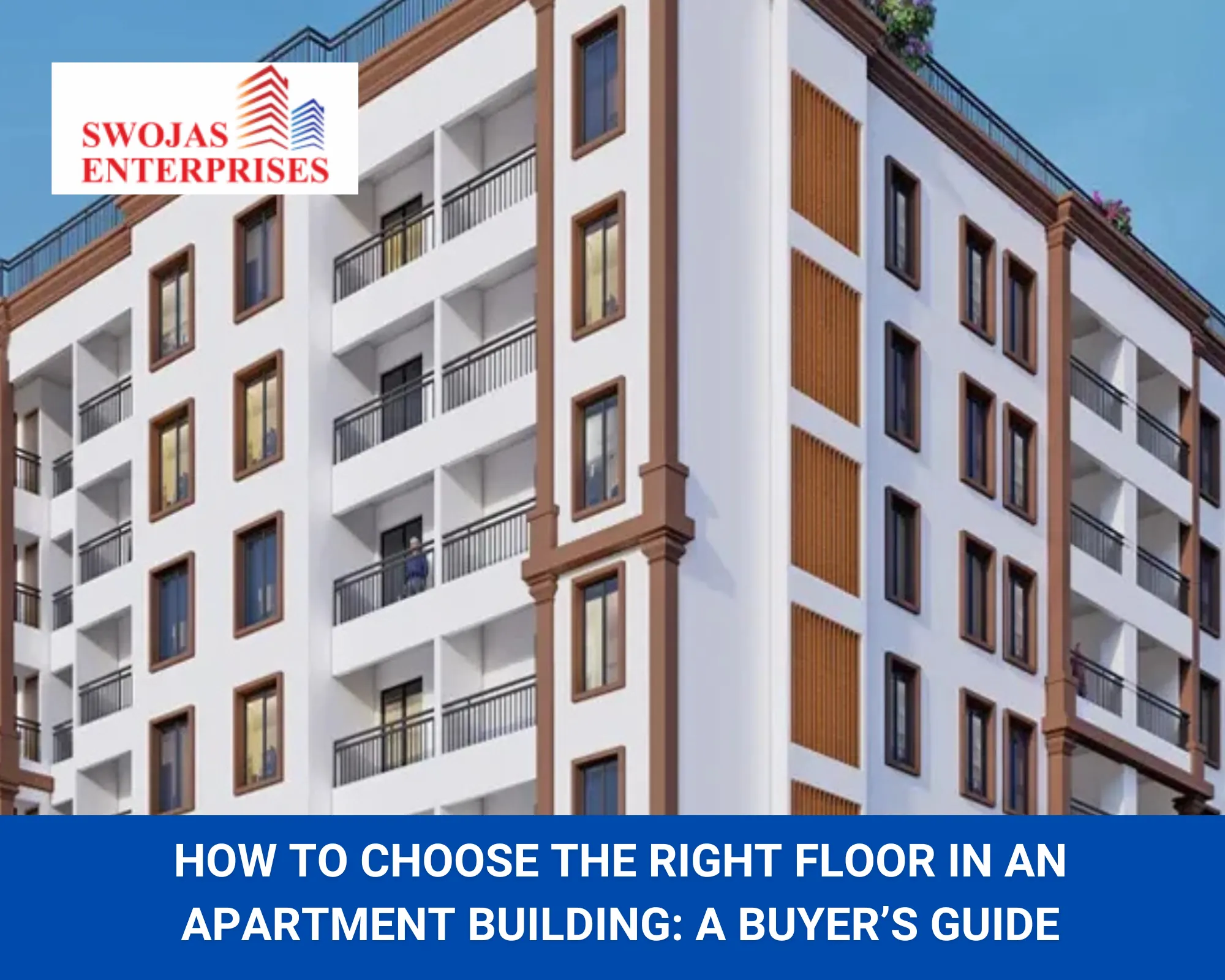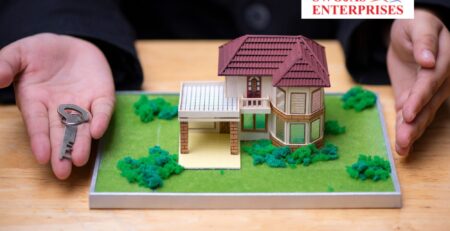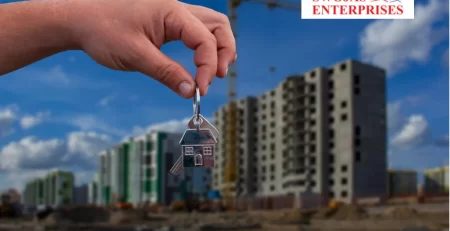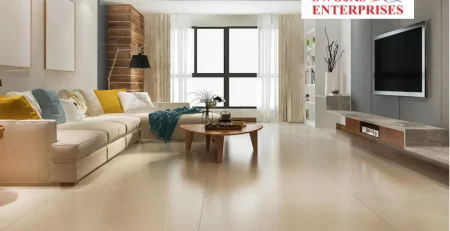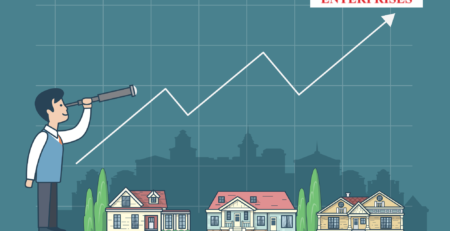How to Choose the Right Floor in an Apartment Building: A Buyer’s Guide
Swojas Enterprises2025-07-11T10:09:03+00:00Choosing the right floor in an apartment building is more than just a matter of preference, it significantly affects your comfort, daily routine, and even the property’s resale value when it comes to it. In cities like Pune, where high-rise living is becoming a normal setting, especially with the scenic views that they offer, selecting the right floor can make a noticeable difference to your quality of life. In this guide we explore the key considerations to help you decide which floor is best in a flat, tailored to your lifestyle, plans, and local conditions.
Key Factors to Consider When Choosing a Floor : Here are something to look at.
Age and Mobility of Residents: If you are planning to live with elderly family members, young children, or persons with disabilities, lower floors might be more convenient due to quicker access and reduced dependency on elevators. Emergency evacuation is also easier from lower levels, and medical evacuations also become easy.
Privacy and Noise Levels: Lower floors, especially those near lobbies or entrances, can be noisier due to foot traffic, parking areas, and external sounds and kids playing. In contrast, higher floors generally offer more peace and privacy, being farther away from the hustle of the ground level.
Access to Sunlight and Ventilation: Higher floors often receive better cross-ventilation and sunlight, which can improve indoor air quality and mood of the people living in the house. However, in cities like Pune that experience intense summers, too much exposure can make also make the upper floors uncomfortably hot.
Water Pressure and Utility Services: Water pressure tends to be stronger on lower floors. While modern buildings come equipped with booster pumps, it is still advisable to check the plumbing efficiency before committing to higher floors.
Energy Consumption: Top floors may require more cooling during summer months, leading to higher electricity bills. Additionally, daily lift usage contributes to energy consumption and reliance on power backup systems.
Pros and Cons of Each Floor Level: Let us consider in a point wise organised systems.
Ground Floor
Pros
- Easy and quick access
- May include a garden or private area in select properties
Cons
- Lower privacy due to proximity to entry/exit points
- Increased dust, noise, and security concerns
- Vulnerable to pests and water seepage during monsoon
Middle Floors (1st to 5th/6th)
Pros
- Balanced natural light and temperature
- Quicker access than top floors
- Typically popular among families, making them easier to rent or sell
Cons
- May be priced slightly higher due to demand
- Noise from both above and below can sometimes be a concern
Higher Floors (7th and above)
Pros
- Scenic views, better air circulation
- Less street-level noise and pollution
- Sense of exclusivity
Cons
- Hotter temperatures, especially during summers in Pune
- Heavier reliance on elevators
- Difficult to evacuate during emergencies or power outages
Resale Value and Market Demand by Floor
In Pune, middle floors tend to be the most in demand, especially in well-connected residential zones like Wakad, Kharadi, Baner, and Balewadi. These floors strike the perfect balance between accessibility and comfort for their residents. Top floors, while attractive to some, can see slower resale if they lack features like temperature insulation or premium views or power-backup in the society. Ground floors often appeal to older buyers or those with mobility issues, but may have limited demand in general.
Special Considerations for Pune Buyers
Weather Impact: Pune’s summers can very intense, making top-floor flats warmer and harder to cool unless well-insulated. On the other hand, these same floors might be more pleasant during the milder winter season and have great views during the monsoon.
Load Shedding and Lift Dependency: While load shedding is less frequent in Pune than in some smaller towns, power cuts still occur in some areas. In such cases, residents on higher floors face more inconvenience, especially in buildings with slow or limited backup systems.
Water Pressure and Tank Placement: Top floors may experience lower water pressure, particularly during peak hours. It’s essential to ask about the building’s water supply design, especially if you are considering anything above the 6th or 7th floor.
Vastu Shastra and Floor Selection: In India, cultural beliefs and Vastu Shastra often influence property decisions. Some buyers avoid top floors due to a belief that they lack “grounding,” while others prefer middle floors as they symbolise balance. There’s no one-size-fits-all Vastu rule, but if spiritual harmony matters to you, consult a Vastu expert before finalising.
Developer Pricing and Floor Rise Charges: Most developers charge a “floor rise” premium, meaning the price increases as you go higher. This is justified by better views and privacy but can make top floors costlier by ₹100–₹500 per square foot, depending on the project. Be sure to factor this into your total budget and make a decision in the floor accordingly.
Final Checklist for Choosing the Right Floor
Lifestyle Fit: Do you want quick access to the ground or a peaceful, elevated view?
Mobility and Safety: Are there elderly or very young residents at home?
Resale Plans: Is the floor you’re choosing popular in the resale or rental market?
Building Amenities: Does the building have sufficient lift backup and water pressure support for higher floors?
Energy Efficiency: Will cooling costs on higher floors impact your budget?
Conclusion
The “best floor to live in an apartment building” doesn’t exist but rather depends on a variety of factors—from your lifestyle to the local climate. While top floors offer views and peace, lower and middle floors often win in practicality and accessibility. In cities like Pune, where high-rise living is on the rise, being mindful of small details like lift backup, ventilation, and water supply can help you make a more informed choice and a secure future.Ultimately, choosing the right floor is about balancing your present comfort with future planning. Align your floor decision with your lifestyle, health needs, and long-term investment goals—and you will be one step closer to your dream home.
FAQs
Which floor is best for families with children?Middle floors (1st to 5th) offer a great balance of safety, convenience, and comfort.
Is the top floor better for investment?
It depends. If the view is exceptional and the insulation is well-planned, yes. Otherwise, middle floors tend to have better market demand.
Are ground-floor flats harder to sell?
They can be, due to concerns over privacy, noise, and security, but they’re attractive to senior buyers and can sell well in specific contexts.

